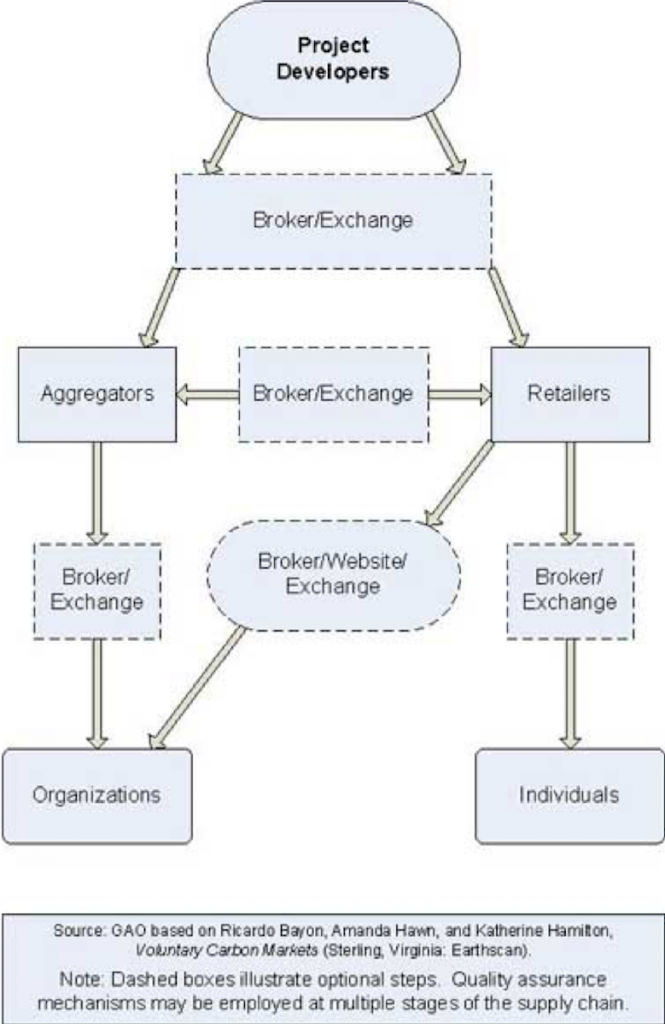Designing, implementing and operating carbon offset projects requires the involvement of a number of parties, stakeholders and authorities. Although the parties involved differ from project to project, some general categories and types of market players can be defined as follows.
 Project Owners
Project Owners
The operator and owner of the physical project installation where the emission reduction project takes place. An owner can be any private person, company or other organization.
Project Developers
A person or organization with the intention to develop an emission reduction project. This could be the project owner, a consultant or specialized services provider.
Project Funders
Banks, private equity firms, private investors, non-profit organizations and other organizations may lend or invest equity to fund a project. Some offset program standards have rules as to what kind of funding, aside from offset revenue, is acceptable for an offset project.
Stakeholders
Individuals and organizations that are directly or indirectly affected by the emission reduction project. Stakeholders include the parties interested in developing a specific project (e.g., owner, developer, funder), parties affected by the project (e.g., local population, host community, environmental and human rights advocates) and national and international authorities.
Third Party Auditors – Validators and Verifiers
Almost all offset programs require a third-party auditor to validate and verify a project’s baseline and its projected and achieved emission reductions. Under CDM, the auditors are called Designated Operational Entities (DOEs). To minimize conflicts of interest, the CDM does not allow the validating DOE to also conduct project verification. Most offset programs also have processes for accrediting their third party auditors before they are approved to conduct validation and verification activities.
Standards Organizations
In the absence of national or international legislation, standard organizations define a set of rules and criteria for voluntary emission reduction credits.
Brokers and Exchanges
In the offset credit wholesale market, emission offset buyers and sellers can have transactions facilitated by brokers or exchanges. Exchanges are usually preferred for frequent trades or large volumes of products with standardized contracts or products, while brokers typically arrange transactions for non-standardized products, occasional trades, and small volumes.
Traders
Professional emission reduction traders purchase and sell emission reductions by taking advantage of market price distortions and arbitrage possibilities.
Offset Providers
Offset providers act as aggregators and retailers between project developers and buyers. They provide a convenient way for consumers and businesses to access offset credits from a portfolio of projects.
Final Buyers or End-Users
Individuals and organizations purchase carbon offsets to counter-balance GHG emissions. Therefore, the final buyer has no interest in reselling the offset but will prompt the retirement of the carbon offset credit.
